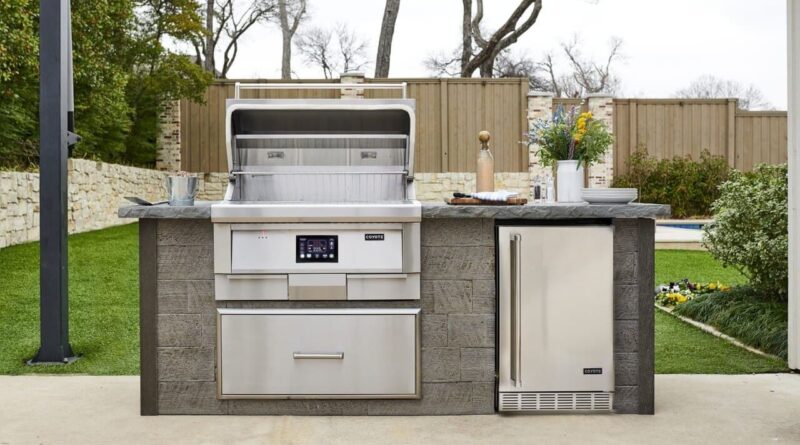Nothing rivals the aroma of chicken, veggies, and burgers being tossed on metal tines. It becomes much more thrilling when you fire up the grill outside and enjoy the lovely sunshine and pleasant air. If you want to do some grilling of your own, whether you’re a newbie to grilling at home or consider yourself a seasoned pitmaster, you may be wondering which grill is best for you. You may feel overwhelmed and mystified when it comes to making that selection. To assist you in selecting the finest grill for your needs, we’ve compiled a list that highlights the advantages and disadvantages as well as the differences between each type of grill.
However, before we get into the various options, you should consider some important factors that will influence your grill selection. These are some examples:
What’s Cooking?
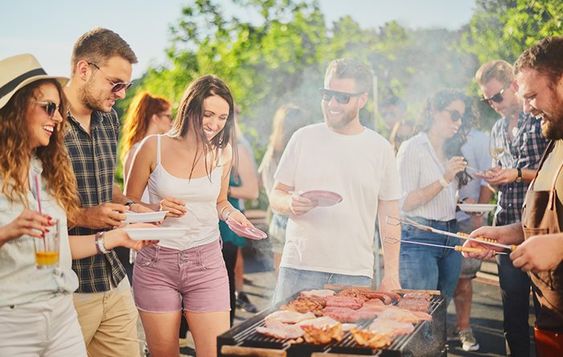
source: pinterest.com
The type of grill you want depends on the amount of space you need. Do you enjoy huge chunks of meat such as pulled pork, smoked ribs, or brisket? If so, you’re most likely looking for a charcoal grill. Some people prefer to smoke foods in a slow and steady manner. For such persons, a two-zone cooking function is appropriate.
Large propane barbecues, on the other hand, offer plenty of area but aren’t very good at smoking. However, if you prefer to cook steaks, seafood, burgers, and chicken pieces that require speedy results, such a grill might be a good alternative. They require less attention and begin more quickly. Nonetheless, you’ll have to forego the natural smoky flavour that charcoal provides in exchange for all of the benefits listed above.
Two-Zone Cooking!
Independent of the fuel or grill type, two-zone cooking is a must-have feature in grilling. As the name implies, it includes the concept of having two independent cooking zones with various temperature levels to better manage to grill. This protects the meat from burning or drying out.
Weather Condition
If you live somewhere with moderate temperature and good weather, the weather isn’t a big deal. However, if your location is characterised by severely low temperatures and snowfall, appropriate insulation should be a top consideration while making your buying selection.
Choosing a poor grill will not only result in poor insulation but will also consume a lot of fuel to compensate. Furthermore, the grill’s general body construction should be composed of robust materials to withstand intense temperatures and resist corrosion.
Gathering Dimension
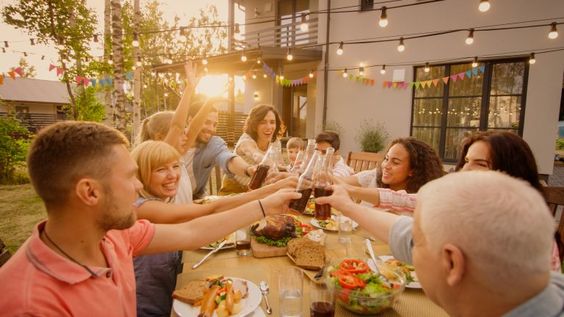
source: pinterest.com
If you’re only cooking for yourself and your partner, a small grill is ideal. However, if your grill is too small to accommodate a large group of friends or family who enjoy barbecuing, guests may have to wait a long time before they can eat. If you enjoy regular entertainment and host a lot of functions and parties, you’ll need a grill large enough to handle that crowd.
As an added bonus, larger grills can save you a lot of time when cooking huge meals. Smaller grills have limited space, which means you’ll have to juggle your food for hours when all you want to do is eat what you’ve cooked.
Ideal Height
Aside from the surface area, the height of the grill can have an impact on how easy it is to use. On many occasions, large cuts of meat such as a whole turkey, beer can chicken, and other large cuts of meat must be cooked below the grill. You’ll need a grill that fits your height requirements to close the lid on these items.
Various Types Of Grills
The following is a list of the various types of grills used for barbecuing:
Charcoal Grill
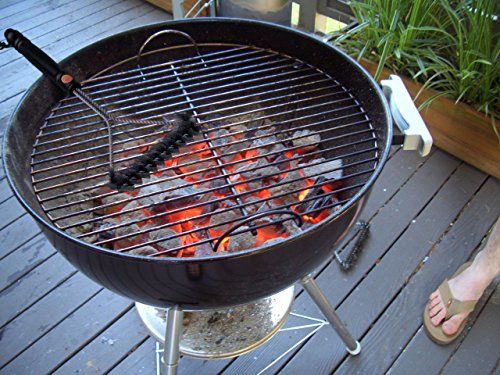
source: pinterest.com
When you think of barbecue grills, the first thing that comes to mind is a charcoal grill. It’s the most traditional type, and it uses charcoal briquettes and a starter like lighter fluid. The traditional smoky flavour that takes the food aroma to the next level is the main attraction of charcoal grills. They’re known for their high-heat cooking style and can be converted into makeshift smokers.
Charcoal grills are difficult to use because of their high fuel consumption. When it comes to long-distance cookouts, you may be frustrated by how quickly you run out of charcoal. As a general rule, you should always have extra charcoal on hand. However, with practice, you’ll be able to develop grilling techniques that will allow you to grill more efficiently while consuming less fuel.
Kettle Style Grill
Kettle style charcoal grills are a well-known and easy-to-use type of charcoal grill. They have a kettle-like shape, with a rounded bottom, a stand, grill grates, and a tight, removable lid. Charcoal is stuffed into the bottom of the grill, behind which is a small grate that permits ash and other cooking waste to fall away from the heated charcoal,
Kettle-style grills also don’t take up a lot of room, and some brands can last for years. They’re adaptable, with a two-zone system that lets you control temperatures and set hot and fast or low and slow sessions. Furthermore, they are often built of metal and are quite lightweight, making them ideal for use as a portable barbecue. They’re available in several sizes and use less charcoal than other charcoal grills.
Standard Charcoal Grill
Standard charcoal grills are rectangular in design and have various heat zones, allowing you to cook multiple food items at the same time. This type of grill is available in a box or barrel design and is made of a stronger gauge metal to maintain a tight seal, as well as cast-iron grates for superior searing and longevity.
A standard charcoal barbecue may be considered too large for a few kebabs, steaks, or burgers. They are, however, an excellent alternative when you require a larger cooking surface.
Propane Grills
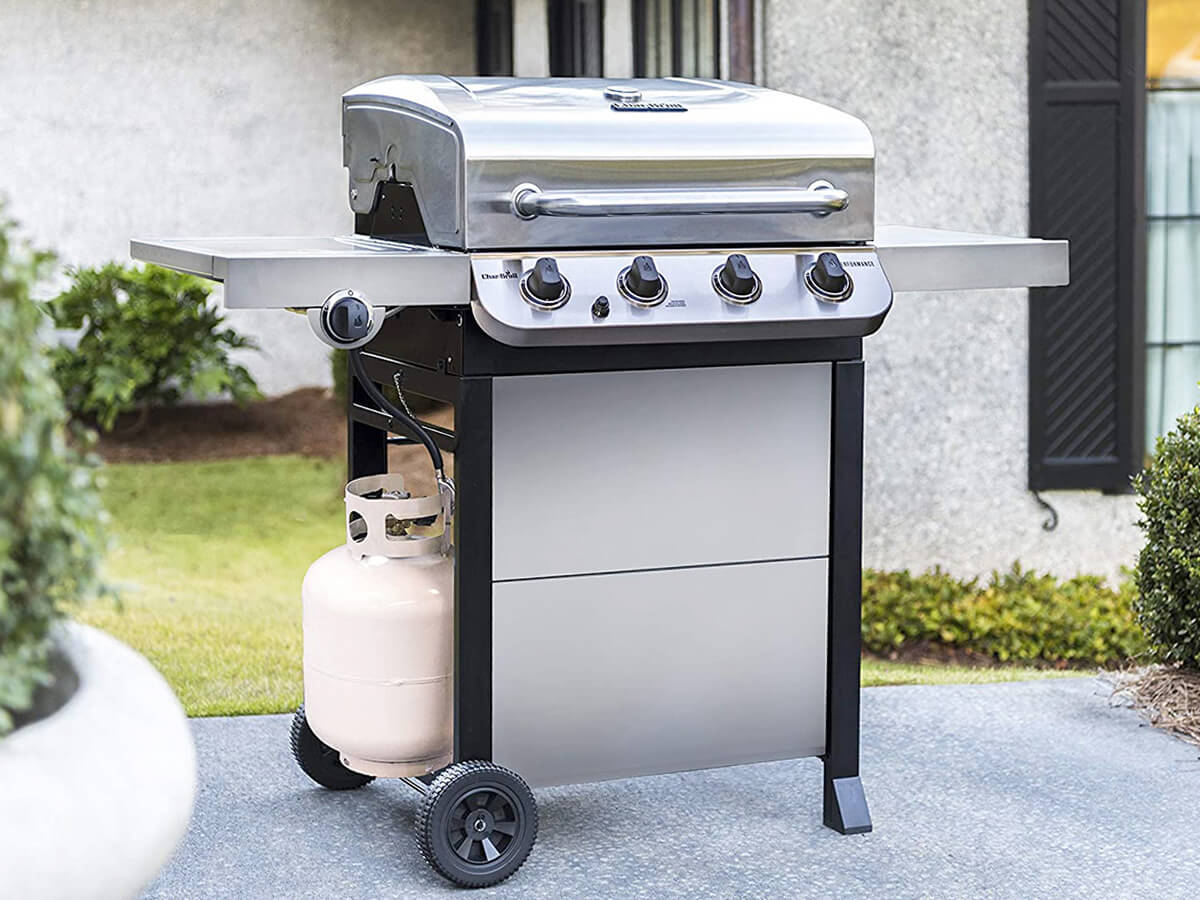
source: southernliving.com
Propane barbecues run on propane gas, which has greater energy than natural gas. They offer a lot more efficient BBQ and grilling experience by delivering a significant amount of electricity and heating up quickly. They not only provide a variety of cooking methods, such as indirect heating and multi-zone cooking, but they are also simple to use. All you have to do is turn the dial and the grill will begin to heat up.
While it can be more expensive than natural gas, propane gas is widely available, so there is no need to worry about a shortage. Propane grills are easier to clean, especially charcoal grills.
Meats like ribs, big roasts, and briskets, pellet grills provide convenience by reducing the need for constant monitoring. It’s a bad choice for outdoor use because it runs on electricity and requires a constant connection to a power source.
Propane & Gas Barbecue Grills
If you don’t want to burn yourself trying to control the temperature of a charcoal grill, propane and natural gas grills are an excellent option. Even if you enjoy working with charcoal, you may prefer to spend more time entertaining your guests than attending to the grill. It’s also inconvenient to have to heat the coal for more than half an hour for a little steak. Propane and natural gas barbecues are ideal for situations like these.
Pellet Grill
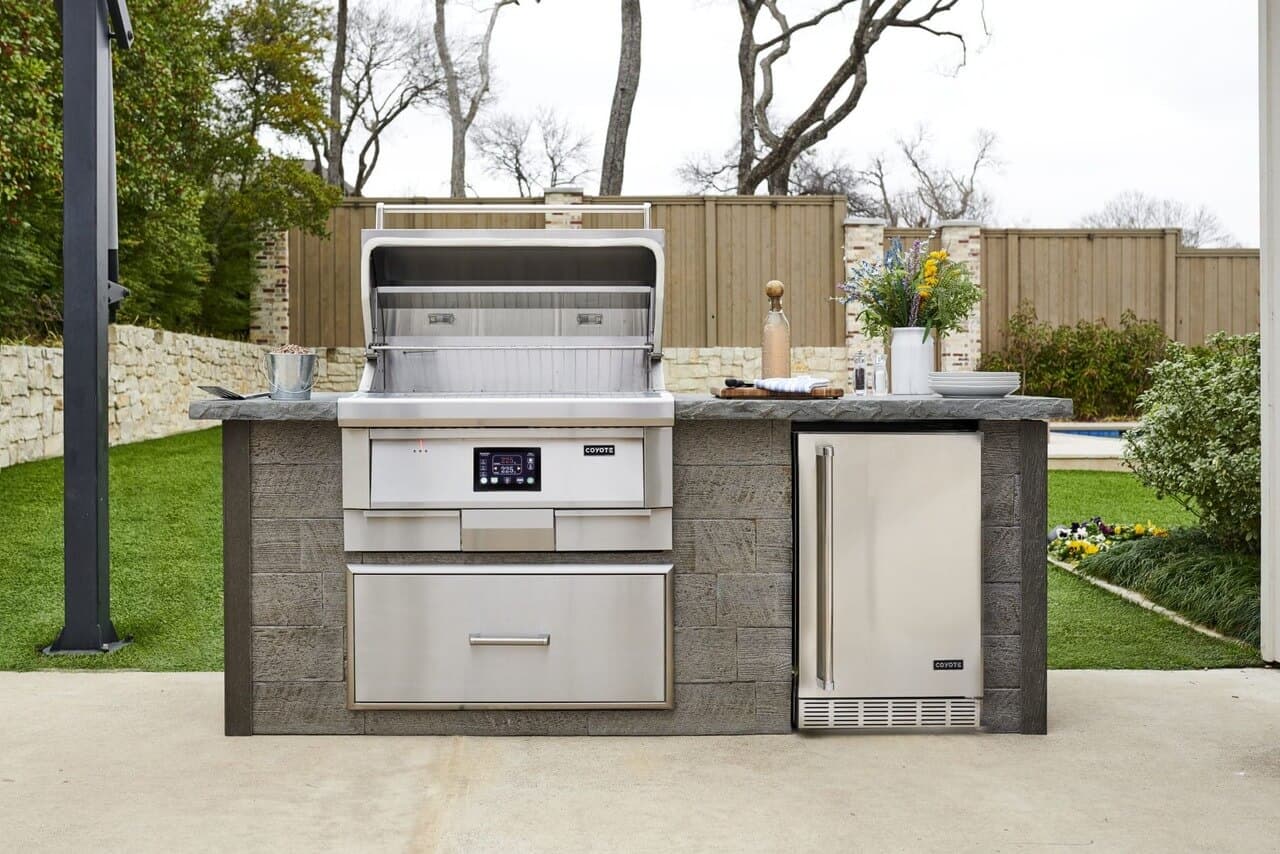
source: bigcommerce.com
A pellet grill is a cross between a smoker and a grill, providing two fantastic cooking options. In the last five years, it has become a popular grilling item as a convenient and savoury option. It is made of food-grade wood pellets that are fed into a hopper and augered into a burn pot.
The burn pot and thermostat are powered by electricity to maintain the grill close to the temperature you specify. Because an electronic thermostat regulates the temperature and keeps it within your set range, you won’t have to do anything to get it up and running.
As a result, for longer-cooking
Pellet grills are generally perceived to be less successful at browning meat than other grills. Some merchants, on the other hand, have moulded their image by introducing dishes with incredible char and grill marks.
Natural Gas Grill
Natural gas grills are identical to propane grills, with a few exceptions. They use natural gas, and they have various advantages over propane grills in terms of ease and efficiency.
BTUs might be wasted when tanks become chilled in the winter. The amount of work required to heat 1 pound of water by one degree Fahrenheit is measured in BTUs (British Thermal Units). The decrease in BTUs turns the propane from a liquid to a gaseous form, which is not an issue with natural gas barbecues.
Furthermore, natural gas grills save a lot of money on gas. A natural gas grill can handle long cookouts without needing to be refilled. This is not the situation with propane or charcoal grills, which must be replaced when the fuel supply runs out. The biggest issue with a natural gas grill, on the other hand, is that once it’s set up, it’ll stay. This is because a competent grill installer will hardwire it somewhere.
Natural gas grills are simple to light and use little fuel, but they lack the portability that many of us value.
Infrared Grills
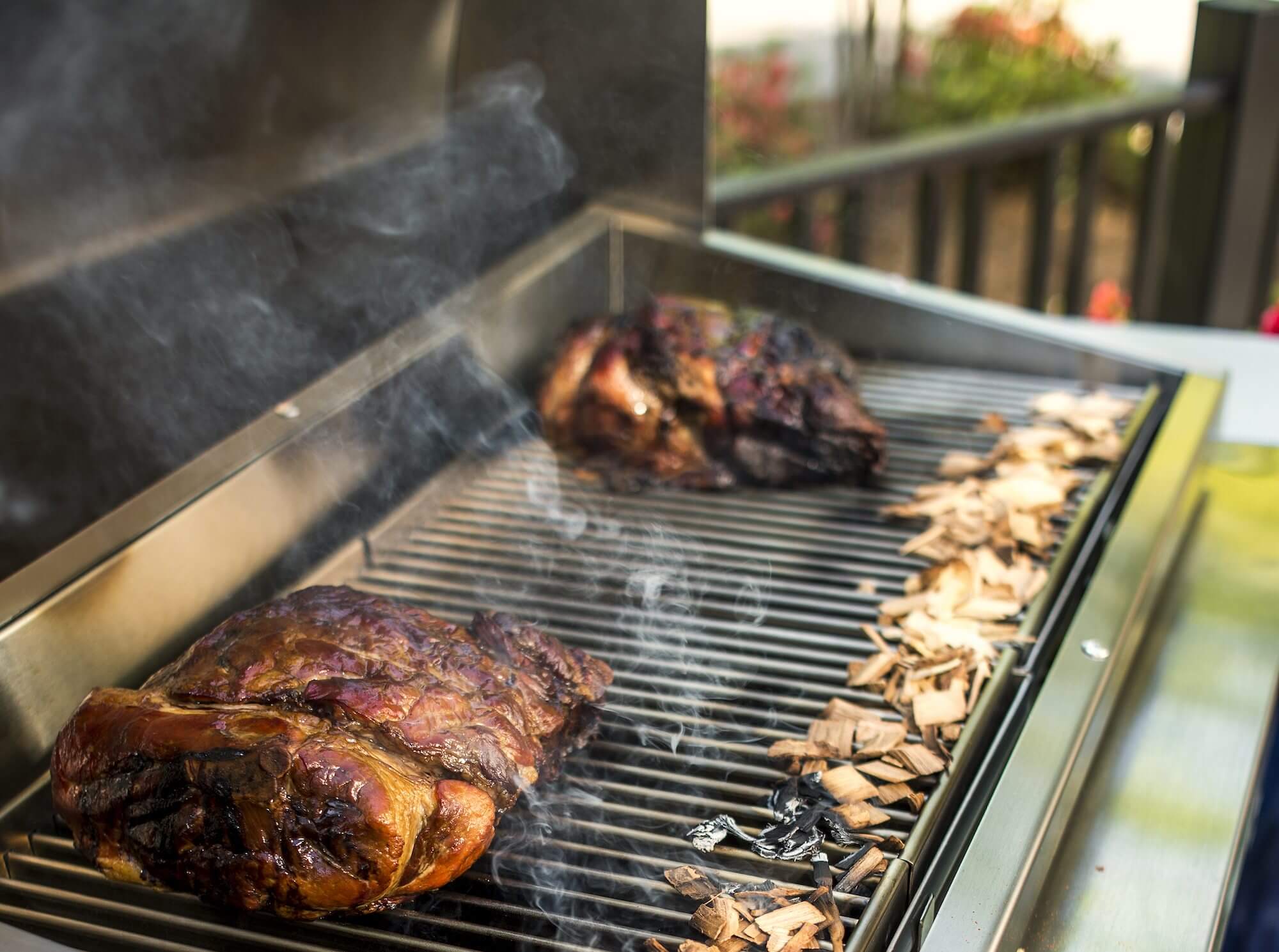
source: electricsmokerguy.com
Despite their futuristic appearance, infrared grills have been around since the 1980s and apply traditional grilling techniques. Instead of using hot rising air to cook meals, it uses a radiant heat source. Infrared grills heat up rapidly, fully, and evenly, avoiding flare-ups. While most infrared grills use electric burners, some have infrared burners.
The heat produced by infrared grills is too intense for cooking vegetables or fish, but it is great for grilling big portions of meat. Infrared grills are ideal for things that require quick, high-temperature grilling. Furthermore, there is no need to handle charcoal or wood chips with these grills, and cleaning is a breeze.
Dual Fuel/Hybrid Grills
Dual fuel or hybrid grills like gas grills but have the extra benefit of charcoal smokiness, which you admire. These grills alleviate many of the issues that come with charcoal-only grills. You no longer have to worry about trying to light and maintain charcoal briquettes because the gas starter in these grills works extremely well to heat up the charcoal and keep it burning. As a result, there’s no need to trade the smoky charcoal fragrance for easy grilling with these grills.
It’s no surprise that these grills are far more expensive than other types of grills. Not to mention that, unlike with charcoal-only grills, you won’t be able to avoid the time-consuming clean-up. You’ll also have to keep track of both the charcoal and the gas.
Kamado Grill
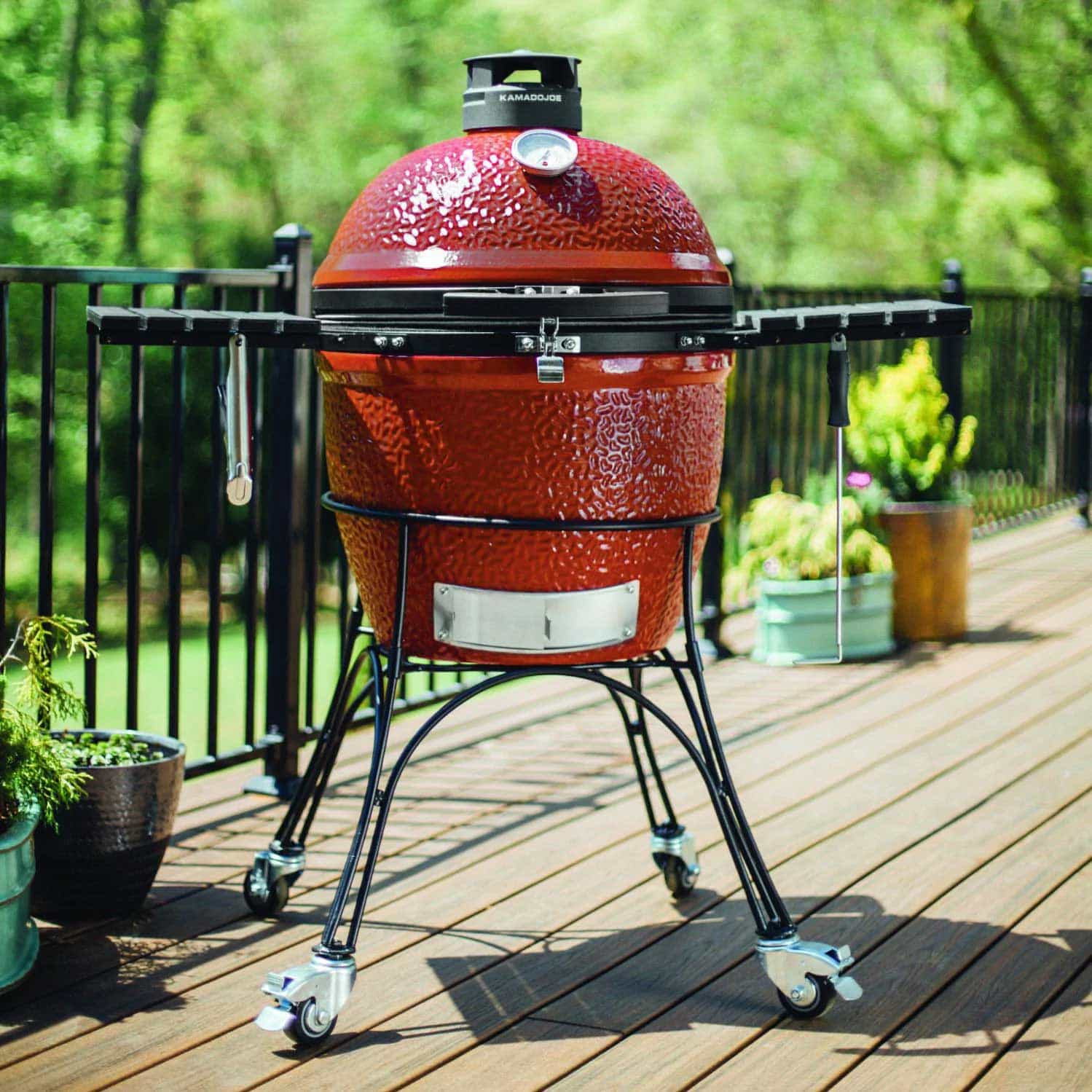
source: mydecorative.com
The kamado grill is a type of grill that has seen a substantial increase in popularity over the last ten years. A kamado grill, also known as an egg grill or ceramic smoker, is a more advanced form of a charcoal grill. It acts similarly to a kettle grill but has a longer, egg-like shape.
Kamado grills are substantially heavier than kettle grills since they are composed of a thicker ceramic substance. The ceramic composition can handle high heat, making it an ideal choice for year-round BBQ primaries. Depending on their size, these grills can weigh between 150 and 500 pounds. The airflow and temperature controls work similarly to kettle grills, except that little modification in a kamado grill can result in dramatic temperature variations. This is owing to its styled design and thermal mass. Due to the weight and thickness of the grill, the lid is secured to the base using heavy-duty, spring-loaded hinges and hence cannot be removed completely.
The heat source for the kamado grill is hardwood lump charcoal, which creates less ash than produced charcoal briquettes. Many people believe that this hardwood lump charcoal has the best flavour. Once the coals are in position and you’re set, the kamado grill will pre-heat for 45 minutes to reach the temperature you want.
The price of a kamado grill varies according to its quality, and the finest brands can be quite pricey.
Portable Barbecue Grill
Many of us are concerned not only with the performance of grills but also with their portability. In fact, some dynamic grillers prioritise portability while purchasing a grill. While it is tough to carry most grills wherever you want, there are several excellent portable grill options on the market. Grills no longer have to be left at home when going tailgating, camping, or to the beach.
These grills have a variety of heat sources, including gas and charcoal. However, when it comes to cooking huge portions of meat or hosting gatherings, their compact structures make them incompatible.

